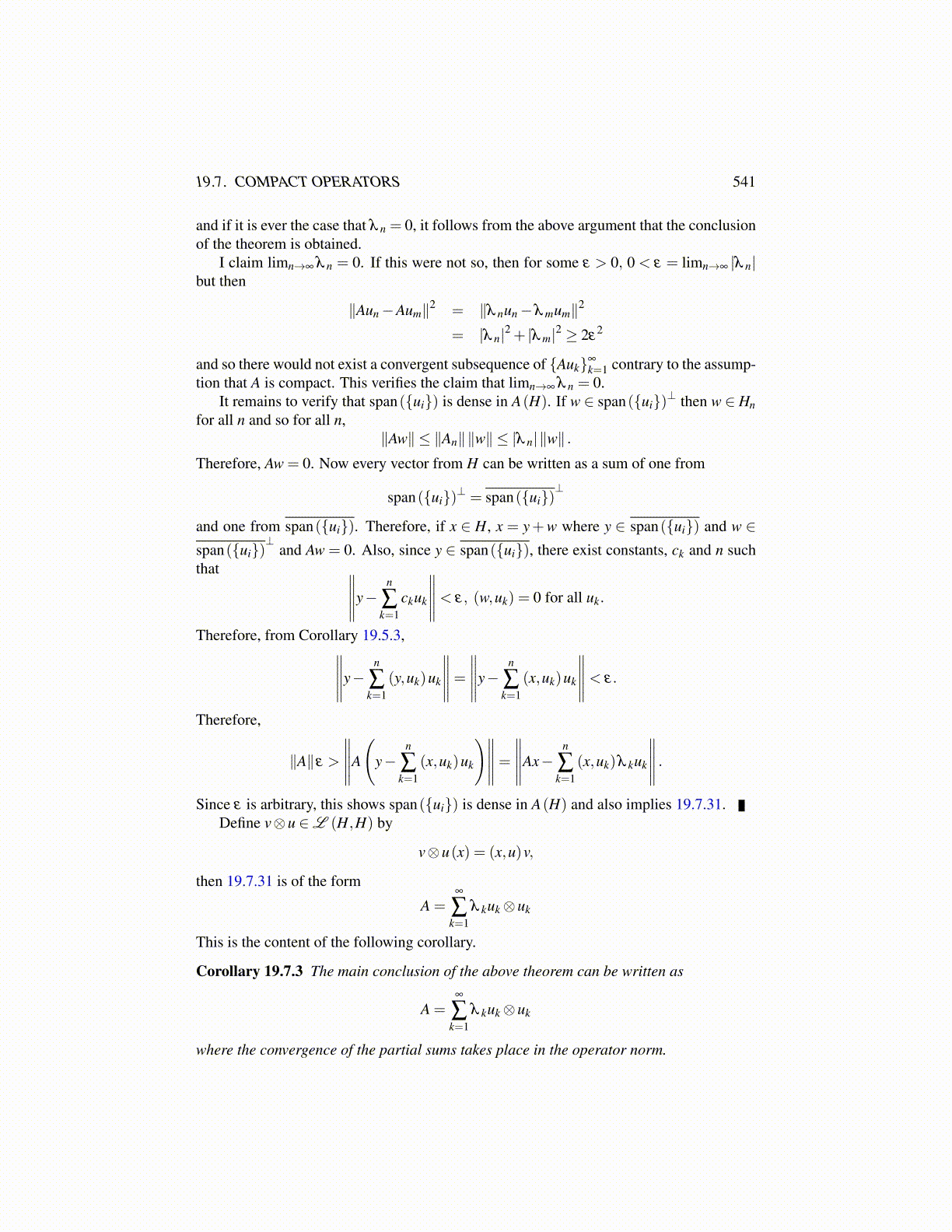
19.7. COMPACT OPERATORS 541
and if it is ever the case that λ n = 0, it follows from the above argument that the conclusionof the theorem is obtained.
I claim limn→∞ λ n = 0. If this were not so, then for some ε > 0, 0 < ε = limn→∞ |λ n|but then
∥Aun−Aum∥2 = ∥λ nun−λ mum∥2
= |λ n|2 + |λ m|2 ≥ 2ε2
and so there would not exist a convergent subsequence of {Auk}∞
k=1 contrary to the assump-tion that A is compact. This verifies the claim that limn→∞ λ n = 0.
It remains to verify that span({ui}) is dense in A(H). If w ∈ span({ui})⊥ then w ∈ Hnfor all n and so for all n,
∥Aw∥ ≤ ∥An∥∥w∥ ≤ |λ n|∥w∥ .Therefore, Aw = 0. Now every vector from H can be written as a sum of one from
span({ui})⊥ = span({ui})⊥
and one from span({ui}). Therefore, if x ∈ H, x = y+w where y ∈ span({ui}) and w ∈span({ui})
⊥and Aw = 0. Also, since y ∈ span({ui}), there exist constants, ck and n such
that ∥∥∥∥∥y−n
∑k=1
ckuk
∥∥∥∥∥< ε, (w,uk) = 0 for all uk.
Therefore, from Corollary 19.5.3,∥∥∥∥∥y−n
∑k=1
(y,uk)uk
∥∥∥∥∥=∥∥∥∥∥y−
n
∑k=1
(x,uk)uk
∥∥∥∥∥< ε.
Therefore,
∥A∥ε >
∥∥∥∥∥A
(y−
n
∑k=1
(x,uk)uk
)∥∥∥∥∥=∥∥∥∥∥Ax−
n
∑k=1
(x,uk)λ kuk
∥∥∥∥∥ .Since ε is arbitrary, this shows span({ui}) is dense in A(H) and also implies 19.7.31.
Define v⊗u ∈L (H,H) by
v⊗u(x) = (x,u)v,
then 19.7.31 is of the form
A =∞
∑k=1
λ kuk⊗uk
This is the content of the following corollary.
Corollary 19.7.3 The main conclusion of the above theorem can be written as
A =∞
∑k=1
λ kuk⊗uk
where the convergence of the partial sums takes place in the operator norm.